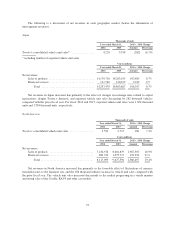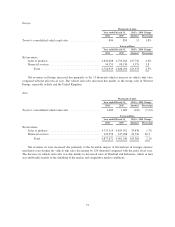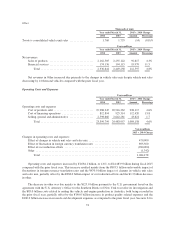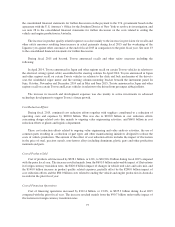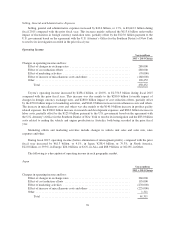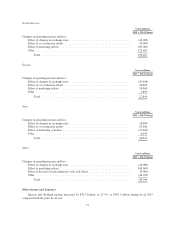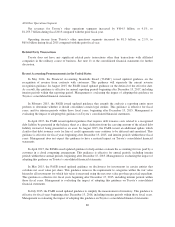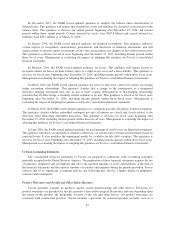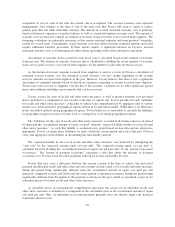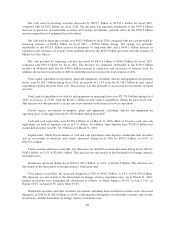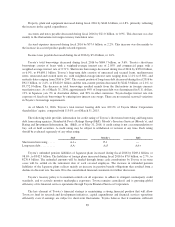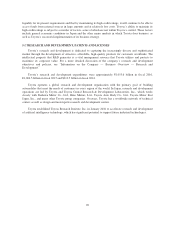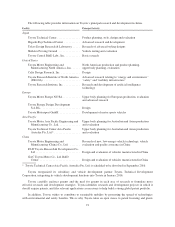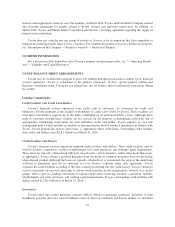Toyota 2015 Annual Report Download - page 87
Download and view the complete annual report
Please find page 87 of the 2015 Toyota annual report below. You can navigate through the pages in the report by either clicking on the pages listed below, or by using the keyword search tool below to find specific information within the annual report.component of cost of sales at the time the related sale is recognized. The accrued warranty costs represent
management’s best estimate at the time of sale of the total costs that Toyota will incur to repair or replace
product parts that fail while still under warranty. The amount of accrued estimated warranty costs is primarily
based on historical experience of product failures as well as current information on repair costs. The amount of
warranty costs accrued also contains an estimate of warranty claim recoveries to be received from suppliers. The
foregoing evaluations are inherently uncertain, as they require material estimates and some products’ warranties
extend for several years. Consequently, actual warranty costs may differ from the estimated amounts and could
require additional warranty provisions. If these factors require a significant increase in Toyota’s accrued
estimated warranty costs, it would negatively affect future operating results of the automotive operations.
An estimate of warranty claim accrued for each fiscal year is calculated based on the estimate of warranty
claim per unit. The estimate of warranty claim per unit is calculated by dividing the actual amounts of warranty
claim, net of claim recovery cost received from suppliers, by the number of sales units for the fiscal year.
As the historical recovery amounts received from suppliers is used as a factor in Toyota’s calculation of
estimated accrued warranty cost, the estimated accrued warranty cost may change depending on the average
recovery amounts received from suppliers in the past. However, Toyota believes that there is not a significant
uncertainty of estimated amounts based on historical experience regarding recoveries received from suppliers.
Toyota may seek recovery to suppliers over the life of the warranty, and there are no other significant special
terms and conditions including cap on amounts that can be recovered.
Toyota accrues for costs of recalls and other safety measures, as well as product warranty cost described
above, included as a component of cost of sales at the time of vehicle sale. Toyota provides for such “liabilities
for recalls and other safety measures” at the time of vehicle sales comprehensively by aggregate sales of various
models in a certain period by geographical regions instead of by individual models. While there is no difference
in the calculation method among geographical regions, Toyota believes it is reasonable to calculate the liabilities
by geographical regions because of factors such as varying labor costs among geographical regions.
The “liabilities for the costs of recalls and other safety measures” recorded in the balance sheet is calculated
by deducting the “accumulated amount of repair cost paid” from the “expected liability for the cost of recalls and
other safety measures”. As such, this liability is evaluated every period based on new data and are adjusted as
appropriate. Toyota calculates these liabilities for units sold in the current period and each of the past 10 fiscal
years, and aggregates such liabilities in determining the final liability amount.
The “expected liability for the cost of recalls and other safety measures” are calculated by multiplying the
“sales unit” by the “expected average repair cost per unit”. The “expected average repair cost per unit” is
calculated based on dividing the “accumulated amount of repair cost paid per unit” by the “pattern of payment
occurrences”. The “pattern of payment occurrence” represents a ratio that shows the measure of payment
occurrence over 10 years based on actual payments with regard to units sold within 10 years.
Factors that may cause a difference between the amount accrued at the time of vehicle sale and actual
payment on individual recalls and other safety measures mainly include actual cost of recalls and safety measures
during the period being significantly different from the accumulated amount of repair cost paid per unit
(generally comprised of parts and labor) and the actual pattern of payment occurrence during the period being
significantly different from the pattern of the payment occurrence in the past, which is considered as part of our
estimation process for future recalls and other safety measures.
As described above, in estimating the comprehensive provision, the actual cost of individual recalls and
other safety measures is included as a component of the calculation such as the accumulated amount of repair
cost paid per unit. Thus, an individual recall announcement generally does not directly impact the financial
statements when it occurs.
82


